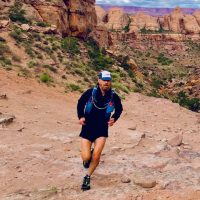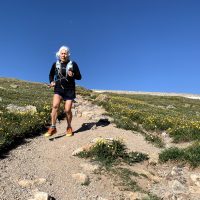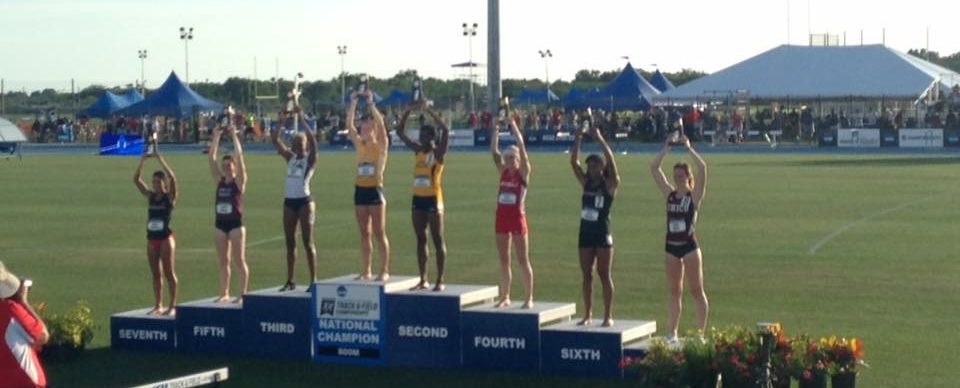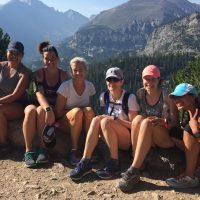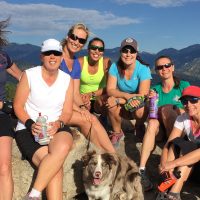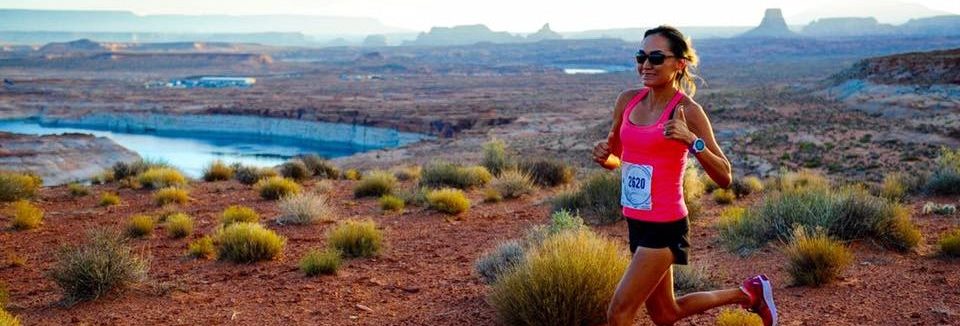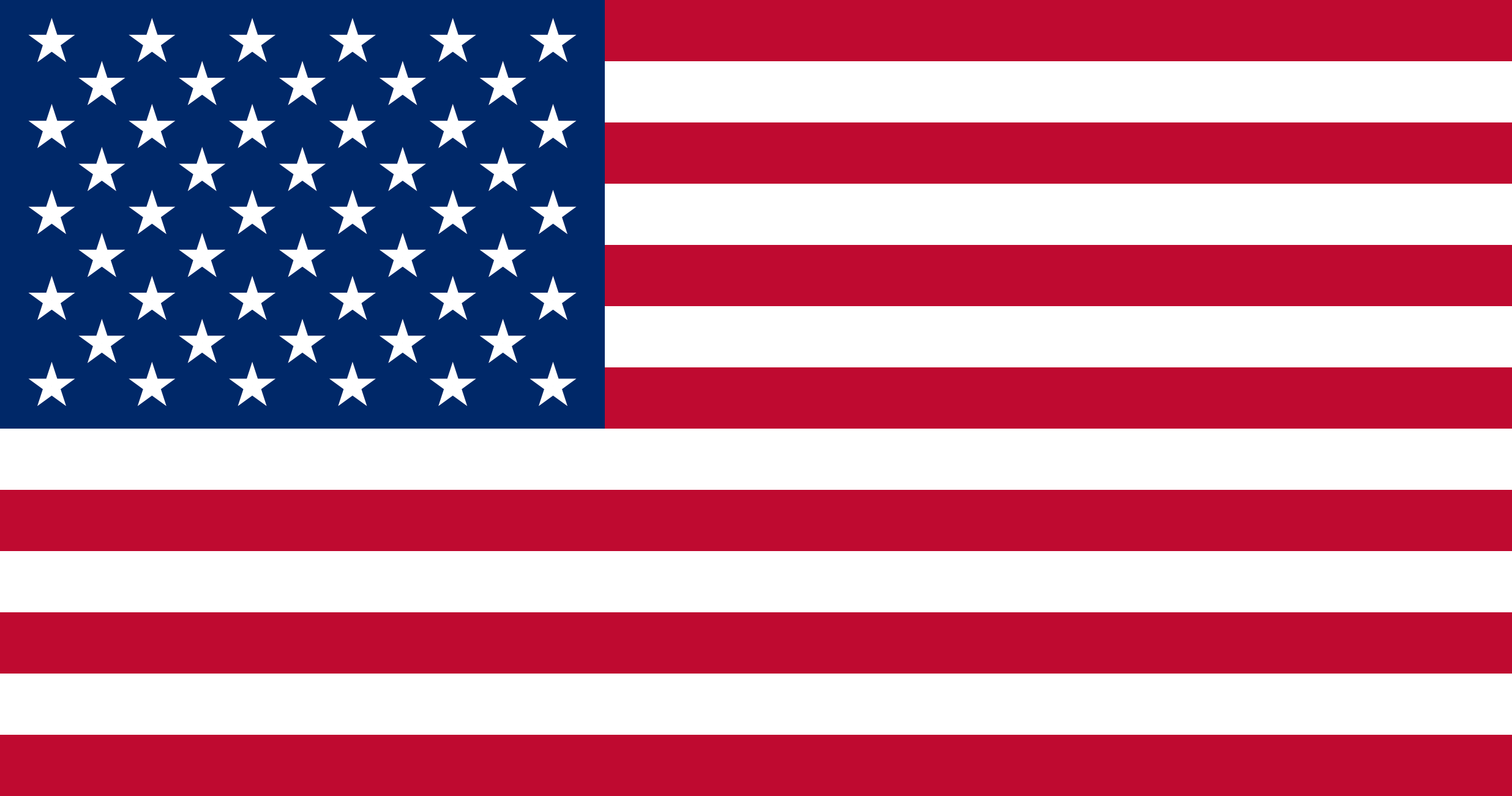[vc_row][vc_column][vc_column_text margin_bottom=”10″]This positive running story is about Seattle runner Jenna Powers. We were fortunate to be able to spend a week with Jenna at our July women’s running camp, and was just super impressed with her attitude towards running, her drive for all things in life, how organized she is, and her humble heart. Jenna has become one of Amazon’s youngest directors, travels 100K + miles a year, and runs 2k+ miles. We had the opportunity to catch up with Jenna post camp, and here is the result of that interview.
Can you share a quick run down on your running history to this point?
I didn’t start running until my 30s. I had just gone through a divorce, and running 5ks on Saturday mornings gave me the excuse to stay home on Friday nights (I would tell my friends I couldn’t meet them out because I had a race in the morning), and Saturday nights (I couldn’t go out because I had just raced that morning). These 5ks were the only running I would do all week, with the exception of running one or two half marathons a year, for which I would up my running to two days per week. I didn’t start running “regularly” until 2012, when I bought my first half marathon training plan online and began running 4 days per week. I was sore for the first month of the plan! And then, in 2014, I trained for and ran my first marathon, and have never looked back. In the last 3.5 years, I’ve run 23 marathons and 7 ultras, up to 100 miles.
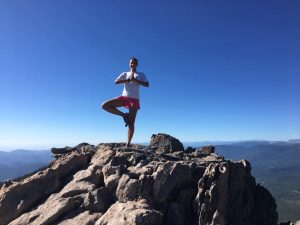 You turn 40 on August 23, 2017. You set yourself a goal of running 40 races this year to celebrate this milestone. Do you remember what it was that prompted you to take that decision?
You turn 40 on August 23, 2017. You set yourself a goal of running 40 races this year to celebrate this milestone. Do you remember what it was that prompted you to take that decision?
I don’t make New Year’s Resolutions, but I do like to set one big goal a year. 2014 was the first time my goal was running-related – completing my first marathon. That seemed like an enormous goal at the time, and I learned so much during the training process that carried into other parts of my life, my annual goals have been running-related ever since. In 2015, my goal was to run 2015 miles in the year (in 2014 I ran about 1600). 2016 was my first 100 miler. Given that 2017 was a milestone birthday, it felt like I should set a related goal. I was trending towards 20 races in 2016, so 40 races seemed like a big leap (though, once I made the decision to go for 40, I got excited and did a bunch more races at the end of 2016, finishing with 26).
As well as running 40 races, you also decided to support 40 runners to and to pay for their entry fees in a race of their choosing. What made you give back in that way, and has the process of selecting runners worked out anything like how you thought it might do? (Jenna’s blog, 40 bibs, not only chronicles her races, it also provides a means for other runners to apply for her to pay their entry fees.)
I wish I could say that I thought of the idea of supporting other runners all on my own, but I didn’t! I am active in Run the Edge’s Run the Year online group. When I announced to them in December my intention to run 40 races for my 40th birthday, several people talked about similar challenges, including one person who performed 40 acts of volunteerism for her birthday. That’s when I decided to support 40 other runners. Racing has had such a positive impact on my life, I wanted others to be able to share in that feeling. I’m a big believer that starting lines change lives; if I can help just a few people get there, I feel like I’ve given something back to a sport that has given me a lot.
How many races have you run so far, and what are the future races you have lined up so far for the rest of 2017?
As of August 7, I have run 29 races, including 6 marathons, 2 50ks, a 100k and an 81-miler. I’ve chosen the Runner’s World Grand Slam Challenge, four races in three days ranging from a 3.8 mile trail run to a half marathon, as races #37-#40. Number 40 will be on October 22; I’ve actually had to slow down so I don’t over-shoot it! Even though my birthday is in August, I gave myself until December 31 to finish the challenge because I didn’t want to get injured or get miserable trying to jam all those races in. As it turned out, I’ve had to slow down to hit 40 in October. But once I get 40, I think I’m just going to go a little crazy and see how many races I can complete before December 31st. Right now, 52 seems like a good number…
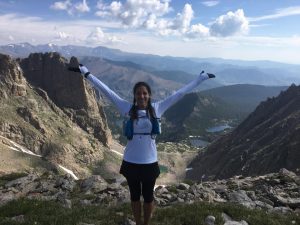 You have noticed that as your running career has taken off, so has your professional career. Can you share the major links between the two, and what do you think is the major factor at play when these alignments happen?
You have noticed that as your running career has taken off, so has your professional career. Can you share the major links between the two, and what do you think is the major factor at play when these alignments happen?
I was promoted as one of Amazon’s youngest Directors at the same time that I was training for my first marathon. While I was training for my first 100 miler, I went from leading a team of 12 in the U.S. to leading a global team of 130. And, in the midst of my 40 bib quest, I’ve taken on another new and challenging role at the company. I don’t think these are coincidences. Amazon’s culture is famous for its acceptance, and even encouragement, of failure and long-term view of success. It’s an amazing place to work because of those values—but learning to fail and be okay with it wasn’t easy. Fear of failure is natural, but I’ve found that racing is a safe way to practice getting comfortable with it.
Just last October I set a road marathon PR in Chicago.. I’d been struggling at races all summer and wasn’t in a good place physically or emotionally. Even though I’d wanted to try and PR it, I had a cold and I felt so bad when I got off the plane in Chicago, I thought I should just forget about trying to run hard. The truth was that I didn’t want to risk another disappointing race. By the time I got to the expo, I knew I had two choices: I could wallow in the fact that I wasn’t 100% (that is, give up on a PR before I even started the race), or I could give it my best shot. I decided to do the latter. I cut 7.5 minutes from my marathon PR that day because I was willing to fail. It’s scary to take risks at work. What if you fail and tarnish your reputation? What if you mess up and people don’t want to work with you anymore? What if you don’t hit your goals? The fear is real—especially in a society that encourages you to avoid failure. But as a non-professional athlete, there are absolutely no consequences to having a bad race. What better place to practice taking risks than a place where there is no consequence for doing so? And by getting more comfortable with risk-taking in racing, I’ve become more comfortable with risk-taking in my career.
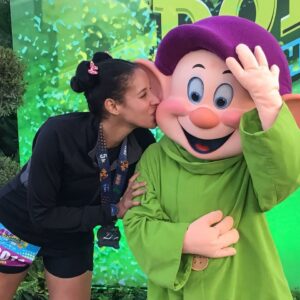 What is it you like best about running, and do you have a favorite run (or two) that you love returning to?
What is it you like best about running, and do you have a favorite run (or two) that you love returning to?
My favorite thing about running and racing is that I get to see and experience things that others don’t because my feet can take me there. My first marathon was on the Great Wall of China. I’ve run across the Golden Gate bridge, in the Rocky Mountains, and through the city of Dubai. I’ve seen an owl catch a mouse right in front of me in the middle of the night; and I’ve stood at Abe Lincoln’s feet inside his Washington memorial, literally the only person on a Mall that holds millions. The more I run, the more potential there are for magic moments.
You used a visualization technique to change your perception of conditions at the Black Canyon 100k in February this year, ending up finishing under the cut off time to qualify for WS100. You said that it was a great life lesson about thinking that barriers are too great our out of our control, and that changing perception made a key difference. Can you tell us Is this something you have been able to apply successfully to your professional life as well?
Definitely. The environment at Amazon is fast-paced and exciting. There is always more we could be doing for our customers. But that pressure on yourself to be better can swallow you up; it’s what leads to unhappiness and burnout in racing and in life. I couldn’t control the weather at Black Canyon, but I realized I could control how I responded to it. We all have that same control in our professional lives. We’re quick to say, “I can’t ____.”. I can’t switch departments. I can’t ask my boss for a raise. We should be asking questions instead What would have to be true in order for me to switch departments? What would happen if I asked my boss for a raise? Exploring these kinds of questions will reveal that we have so much more control over our present and future than we give ourselves credit for.
Can you tell us something that is uniquely Jenna that no one would know from looking at you?
I didn’t start running until my 30s, and completed my first marathon at 37. It’s important to me that people know that, because there is a perception that high school athletes turn into collegiate athletes turn into adult athletes. So if you weren’t a high school track star, you’ll never be a “real runner.” I think that’s ridiculous. Nobody says that about yogis, or doctors or musicians. Nobody says Julia Child was not a real chef because she didn’t learn to cook until she was in her 30s. If running brings you joy, you are A Runner, regardless of whether you started at 5 or 50.
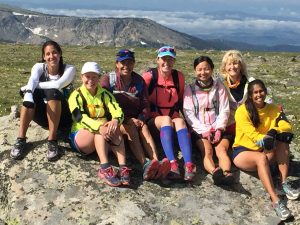 You recently attended one of our women’s running camps. Was the camp experience anything like you thought it would be, and what were three major take aways from the camp for you?
You recently attended one of our women’s running camps. Was the camp experience anything like you thought it would be, and what were three major take aways from the camp for you?
Camp was fantastic! I was duly humbled by and inspired by the other campers. Despite a roughly 25 year age gap between the youngest and oldest campers, different activities and terrain revealed each of our unique strengths. Every day the group of us would find ourselves shaking our head in awe at that one person who was just so much better than the rest of us at something; but it was a different person every time! It’s the first time I’ve been in a situation where I’ve had the opportunity to learn from other runners in real time, and it was fantastic.
What are your goals for running and your professional career for 2018 and ahead?
Other than 40 bibs, my last big running goal for 2017 is to break 4 hours for the marathon. My PR is 4:13, so 4:00 is huge for me, and I’ll be attempting at Kiawah Island in December. One of the women I met at camp has agreed to pace me. She’s 60 and has gone sub-4 4 times in the last couple of years, further proof that you can learn something from everyone! The WS100 lottery is on December 2, so whether or not my name gets picked will have a huge impact on my 2018 plans. If I get in, that will be the big goal for the year. If I don’t get in, in addition to running another qualifier, I have my eye on the Pigtails Challenge 200 miler. That goal seems big enough. Professionally, I just celebrated six years at Amazon; twice as long as I’ve worked at any other company. My goal is to continue to deliver for our customers, while being a good mentor for younger women in the company.
That’s it for the questions…unless there is something else that you have been dying for someone to ask you, and no one has yet???
I want to talk about how I’m helping others link running and their career success! I’m actually working with a group of women doing the Runner’s World Challenge in October on achieving not only their race goals (they are all first-timers when it comes to back-to-back races), but also their career goals by transferring the lessons they learn through race training into their workplaces. Once this pilot group completes their program in October, I hope to be in a position to open the program up to a broader group of women. Anyone who is interested can contact me through my blog, https://40bibs.com/contact/.
We wish Jenna every success with her running and career goals, and know that she will always inspire and help people to find their direction and drive![/vc_column_text][/vc_column][/vc_row][vc_row][vc_column][vc_separator][vc_column_text margin_bottom=”0″]
Would you like to be a part of the Positive Running Movement®? Our bi-weekly newsletter contains more positive running stories and tips on how to get the best from your positive mind as an athlete.Sign up for the newsletter on this page – we look forward to hearing from you!
Terry Chiplin, the visionary behind activacuity, provides positive coaching sessions for clients, working with athletes to enable a positive focus on their status and goals. He can also create personalized guided imagery sessions for clients, delivered as an mp3 audio file that you can listen to on multiple devices.activacuity provides a daily dose of positive guided imagery or visualization sessions. Find out what you can do when you make that mind-body connection – check out our subscription options here.
[/vc_column_text][vc_separator][vc_column_text margin_bottom=”10″]
 You can help raise funds for the American Cancer Society by becoming a subscriber to activacuity®. We are thrilled to announce that from February 1, 2017, we are a partner with the American Cancer Society.Use the code activacssupport2017 when you subscribe for an annual membership through our website, and $10 of your subscription goes to the American Cancer Society. We will also provide a free subscription for activacuity® to a cancer survivor for each paid annual subscription received. The Society will establish a list of cancer survivors that will benefit from the partnership, using the Patient Navigator Program.
You can help raise funds for the American Cancer Society by becoming a subscriber to activacuity®. We are thrilled to announce that from February 1, 2017, we are a partner with the American Cancer Society.Use the code activacssupport2017 when you subscribe for an annual membership through our website, and $10 of your subscription goes to the American Cancer Society. We will also provide a free subscription for activacuity® to a cancer survivor for each paid annual subscription received. The Society will establish a list of cancer survivors that will benefit from the partnership, using the Patient Navigator Program.Our goal is to raise $5000 for the Society over the partnership period.
[/vc_column_text][/vc_column][/vc_row]


